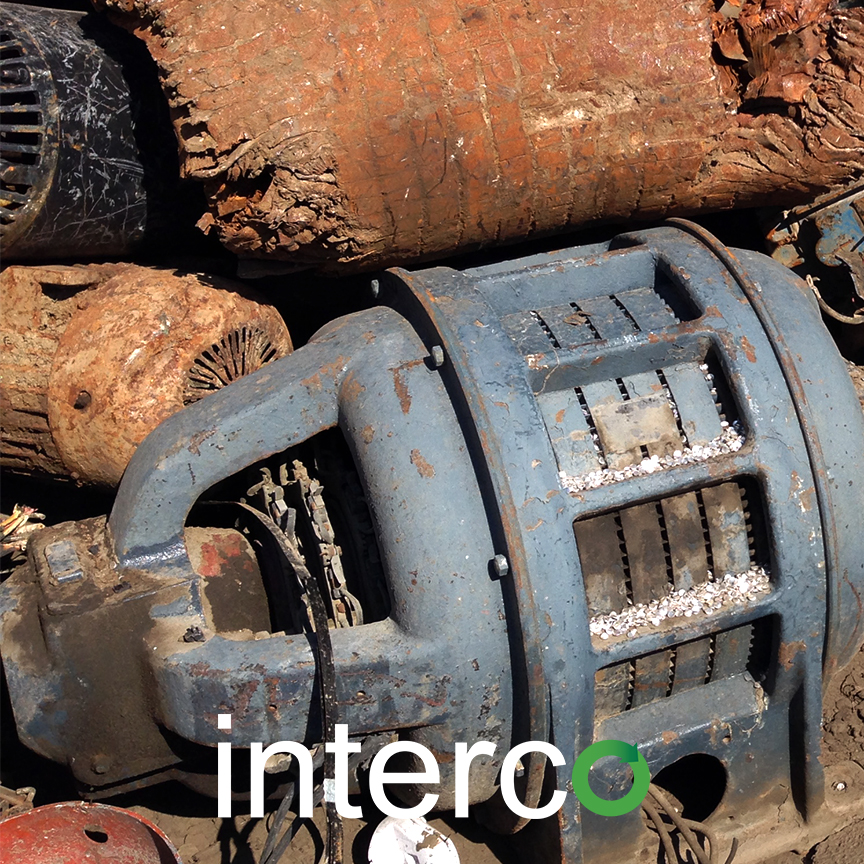Electric Motors: The Recycling Process
Electric motors convert electrical energy into mechanical energy. Recycling electric motors is imperative because of their wide industrial and commercial use.

Examples of devices we use that makes use of an electric motor include:
- Industrial fans
- Blowers
- Pumps
- Disk drives
- Machine tools, etc.
Electric motors generate mechanical energy (force) through the interaction of its windings and its magnetic field.
What are the Components of an Electric Motor?

An electric motor contains a number of components embedded in it. These components are responsible for its converting ability, namely:
- The shaft
- Copper windings
- Bearings
- Armature
- Stator
- Commutator
- Terminals
- Case
These mentioned components all make it possible for the electric motor to successfully convert electrical energy into mechanical energy.
Why Recycling Electric Motor is Important
What happens when your fan stops working? Maybe it got spoiled by an electric surge that damaged all its components – the electric motor inclusive. Do you dispose of it?
Recyclers buy these damaged fans, pumps, blowers, etc. as scraps and take them to recycling centers for recycling. In addition, they separate the recyclable parts and set them apart for processing. Also, the electric motor is 100% recyclable since a majority of its components are metallic.
Furthermore, most industries use electric motors to produce the majority of today’s devices. Therefore, when they are damaged and do not undergo recycling they could cause landfill. Therefore, recycling electric motors help reduce landfill, solid waste and pollution in general. Also, recycling electric motors help protect natural resources i.e. copper. One of the main components of the electric motor contains copper windings.
Copper is very valuable, expensive and used in many electrical devices. Rather than continuously depleting its source, why not recycle? However, recycling motors open job opportunities for interested parties. If you ever dream of being a recycler, you learn more from Interco.
How to Scrap Electric Motors for Recycling

Recycling electric motors is mostly done on a large scale. As a result, some electric motors don’t have enough copper windings.
The process of recycling electric motors should be direct and straightforward:
- First, the recyclers collect many electric motors as possible to increase the possibility of getting enough copper.
- A hammer or hammering mill breaks the metallic casing of the motor.
- Then they separate the components and group them according to their materials.
- Finally, they take the separated components to their different recycling points and recycle them.
If you cannot do this on your own, you can sell your damaged devices that use electric motors as scraps to professional recyclers and make money.
Electric motors are very common items to recycle. Virtually every electric item with a mechanical movement in a home utilizes an electric motor. Many contain either an AC (alternating current) or DC (direct current) electric motor. Look for common motors that are recyclable in household items, industrial applications and automobiles. Interco recycles them all.
Common household items with electric motors include:

- Microwaves
- Hand Tools
- Air Conditioners
- Power Supplies
- Starters
- Washing Machines
- Computers
Common industrial items include:
- Transformers
- Pumps
- Machinery
- Manufacturing Equipment
Common automotive items include:
- Starters
- Alternators
- Generators
What’s inside?
Most motors contain valuable copper and aluminum components. However, the exterior of most motors comprised of steel with a strong shell which protects the more fragile wiring and parts within. Additionally, some motors contain aluminum instead of copper. Most noteworthy. like copper, aluminum conducts of electricity and works well in some applications.
The more copper the more valuable an electric motor is to a recycler. Second most valuable common nonferrous metal found in electric motors is Aluminum. Consequently, steel can be recycled, but steel does not share the value of copper or aluminum. Because the presence of wood and plastic on electric motors is considered a contaminate, those motors contain lower value.
Interco recycles millions of pounds of motors each year. As a result, recyclers categorize motors in to three main categories of size:
- Small motors generally fit about the size of a basketball and not much larger than an apple. Smaller electric motors — usually small electronics transformers in radio controlled cars, for instance — exist are less desirable due to their relative low copper or aluminum content.
- As a result, recyclers classify motors larger than a basketball, but less than 2,000 pounds as large motors.
- They consider motors weighing more than 2,000 pounds over-sized motors. These motors vary in demand due to their size and nonferrous metallic content.
Conclusion
If your company has a scrapyard full of electric motors, sell them to Interco so they can be properly recycled. Contact Interco here.